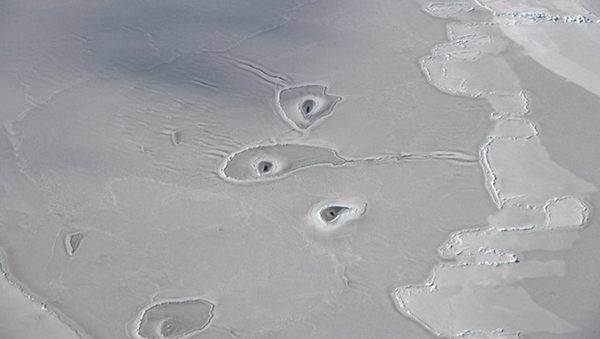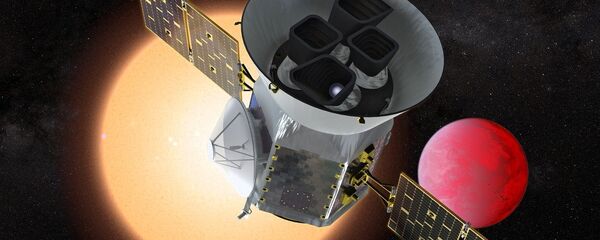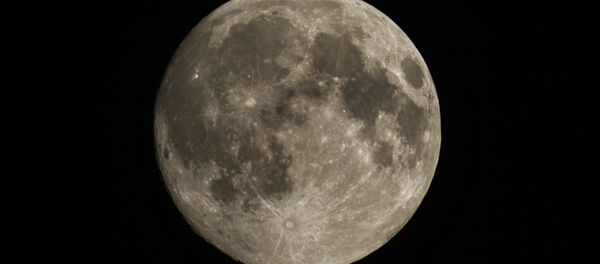On April 14, NASA scientist John Sonntag snapped photos of the ice holes some 50 miles northwest of the Mackenzie River Delta in Canada during NASA's annual Operation IceBridge mission, the aim of which is to map changes in sea ice at the North and South poles.
"We saw these sorta-circular features only for a few minutes today," Sonntag reported, according to a NASA press release this month.
"I don't recall seeing this sort of thing elsewhere," he added.
NASA hasn't commented on how big the mysterious holes are, though.
According to Don Perovich, a sea ice geophysicist at Dartmouth College, the photos reveal that there is young ice growing within what used to be areas of "open water."
"The ice is likely thin, soft and mushy and somewhat pliable. This can be seen in the wave-like features in front of the middle ‘amoeba,'" Perovich told NASA. He also adds that there is a "general left-to-right motion of the new ice," as can be seen by "finger rafting" on the "right side of the image" released recently by NASA.
Finger rafting is a phenomenon that occurs when two ice floes collide and slide above and below each other, resulting in a pattern resembling the interlocking of fingers.
Icebridge project scientist Nathan Kurtz agrees that, while finger rafting explains the finger-like patterns, it's still a mystery as to what caused the semi-circle shaped features.
"It's definitely an area of thin ice, as you can see finger rafting near the holes and the color is gray enough to indicate little snow cover," Kurtz said, NASA reported.
"I'm not sure what kind of dynamics could lead to the semi-circle-shaped features surrounding the holes. I have never seen anything like that before," Kurtz said.
A potential explanation, according to Walt Meier, a scientist at the US' National Snow and Ice Data Center, is the way in which the water moves over the snow and ice when seals pop up for air, washing the snow away.
However, other scientists, like Chris Shuman, a University of Maryland at Baltimore County glaciologist, have different theories.
"This is in pretty shallow water generally, so there is every chance this is just ‘warm springs' or seeps of ground water flowing from the mountains inland that make their presence known in this particular area," said Shuman.
"The other possibility is that warmer water from Beaufort currents or out of the Mackenzie River is finding its way to the surface due to interacting with the bathymetry, just the way some polynyas form," Shuman added. Polynyas are large areas of open water surrounded by sea ice.






